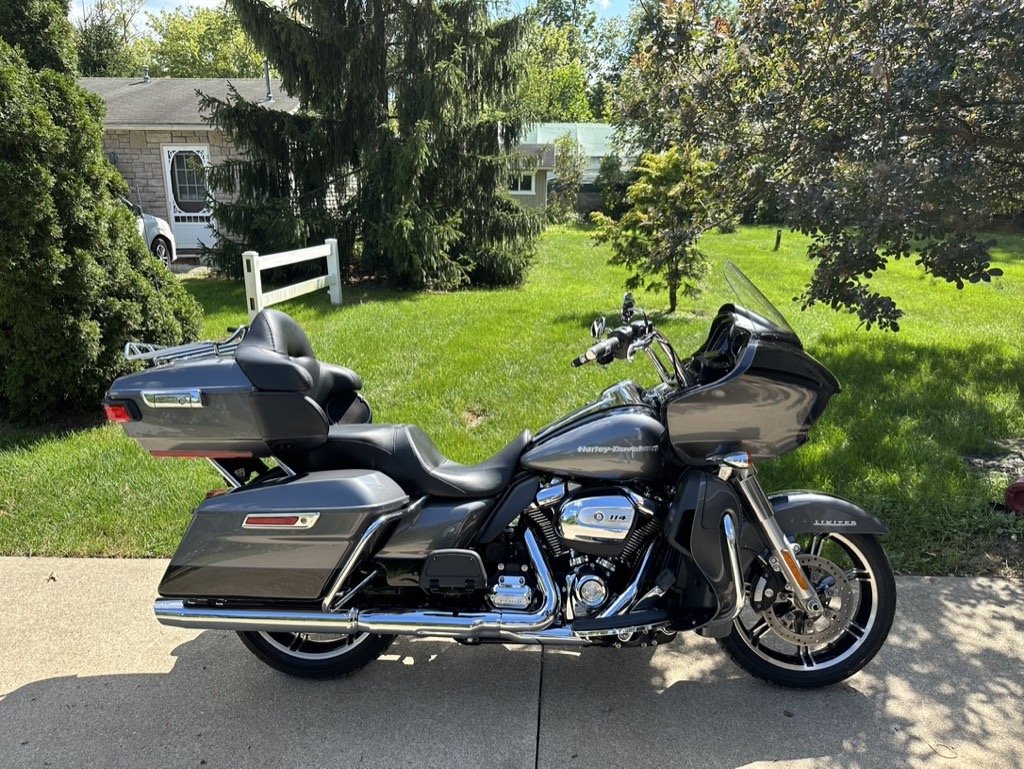-
Posts
18,099 -
Joined
-
Last visited
-
Days Won
235
Content Type
Profiles
Forums
Gallery
Events
Store
Everything posted by Freebird
-
The auto resizing works ok but seems to work best if the picture is a .jpg As for Brads question, to insert a picture within your message, yes, it has to be uploaded somewhere on the internet, not on your computer. You can attach a picture on your computer by using the "Manage Attachments" button and that will add it to the bottom of your post with a thumbnail that you click on to see the larger size. Don
- 6 replies
-
- information
- insert
-
(and 3 more)
Tagged with:
-
There is no reason for the acorn nuts to have been removed if all they did was change the tire. The lack of grease is a common problem so it may well have been removed to grease. I would recommend checking it for grease the next time you pull the rear wheel for a tire change or whatever but for now, if you have a lift, I would just put it on the lift and follow the tightening instructions as outlined above.
-
LOL....I do believe you are right. Oh well....Will Rogers was also a good guy
-
WARNING WILL ROGERS!!!! WARNING WILL ROGERS!!!! OIL THREAD!!! Mobil 1 Motorcycle Specific MX4T I've been using it since 1999 and have always been very pleased with it.
-
I agree with Dan agreeing with Squid.... or something like that. I run 87 octane and have never had a problem of any kind.
-
I'm sorry that it happened Cougar but I think it's good news for us in general. I would hate to find out that there are problems with these radiators.
-

Rumble Road Speakers
Freebird replied to Johnh's topic in Royal Star and Royal Star Tour Deluxe Tech Talk
I wouldn't worry about them. They are a poly type speaker and a little moisture doesn't seem to hurt them. I've never covered mine at any time. When I wash the bike, I don't spray water directly into them but otherwise, I don't give them any thought at all.- 15 replies
-
- amplified
- experience
-
(and 3 more)
Tagged with:
-
The only time I've seen it hard to find neutral was when the oil was getting old. I honestly think that synthetic oil helps a lot. I've run Mobil 1 in my '99 since the second oil change and it's always been easy to find neutral and shifts very well.
-
I've taken the basic course and the advance riders course and highly recommend them for everybody, regardless of how long you have been riding. My good friend Rick Butler put it to me the best way I can tell it...I asked him if it was worth taking the advanced course and he told me only if you consider the fact that it could save your life. That is strong enough for me. As for making them mandatory? I'm not a big fan of government mandating things but I do think that it should be mandatory for any rider under the age of 18. In most states..maybe all states...driver's education is mandatory for anybody under the age of 18 getting a driver's license. The same should apply for the motorcycle courses for any rider under the same age.
-
Yes...same caps.
-
You still have the large hoses connected to the ports on the heads but due to the way they are designed, any condensation would run down and not up and into the heads. I have removed my entire system but that is on my '99 and I certainly wouldn't recommend it to anybody whose bike is still under warranty. Don
-
They are connected to the diaphragm side of the AIS valves that you plugged. They cause the valves to open and close.
-
They no longer do anything. You can just let them hang. Tape up the ends if you would like to...keeps them from getting any trash in them if you ever want to hook them back up.
-

Rear end temperature
Freebird replied to rjmalizia's topic in Royal Star and Royal Star Tour Deluxe Tech Talk
Congrats on your new bike. I hope you love it as most as much of us here do. As for your question, that is perfectly normal. Mine feels HOT to the touch after putting some miles on it. So...just ride and enjoy. -
Sure sounds like the antenna may be grounded. Are you SURE there are no frayed wires in the connector that you installed or that you don't have it grounded on the mount?
- 8 replies
-
- check
- connections
-
(and 3 more)
Tagged with:
-
There are several ways. Here are a couple. Click on the VR Assistance link in the left menu. It sorts the memberslist by state and only shows those who have signed up for the assistance. Click on the "Members List" link in the upper menu bar and scroll down to the state or province that you want to check. It returns ALL the members in that area. Don
- 2 replies
-
- assisatnce
- page
-
(and 2 more)
Tagged with:
-

Yet another Sirius Question (Antenna)
Freebird replied to Tartan Terror's topic in General Tech Talk
Yes..I have done it with success. I should add...I did it on an XM radio but I wouldn't think there would be any difference. -

Yet another Sirius Question (Antenna)
Freebird replied to Tartan Terror's topic in General Tech Talk
I have cut and spliced them but it's not that easy. -

CB and intercom noise help
Freebird replied to Daveinnh's topic in Royal Star and Royal Star Tour Deluxe Tech Talk
A momentary push of the PTT button, front or rear, turns the mics on. You can then use the CB as usual until you do another momentary push to turn them off again. It really is a nice system. -

Threads that grow and grow
Freebird replied to Silveryder's topic in Computer help and tips for using this site.
It it usually due to something that has been posted in that thread. Give me a thread for an example and I'll take a look. -

CB and intercom noise help
Freebird replied to Daveinnh's topic in Royal Star and Royal Star Tour Deluxe Tech Talk
Yep...I recently installed Mic-Mute and love it. See this thread. http://www.venturerider.org/forum/showthread.php?t=992


